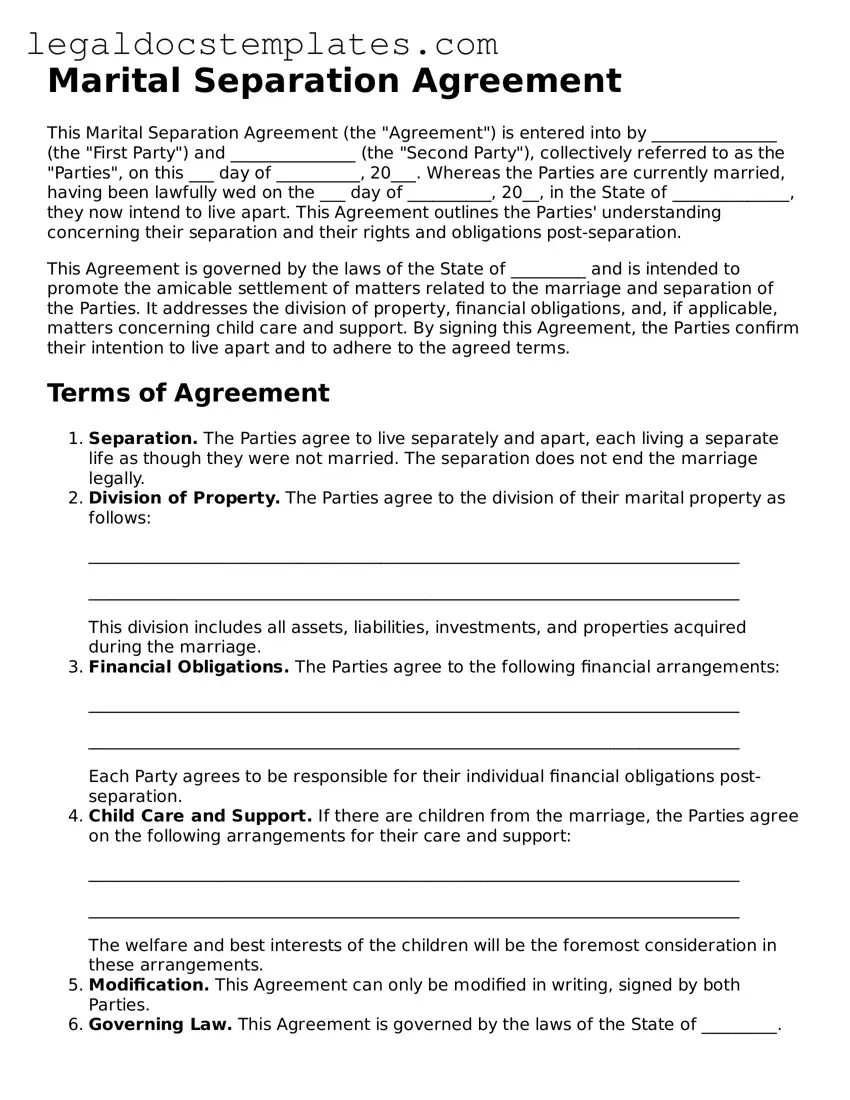When navigating the complexities of filling out a Marital Separation Agreement form, numerous pitfalls await the unwary. A common oversight is neglecting to provide complete and accurate financial disclosures. Both parties must disclose their finances fully and honestly. This includes income, debts, assets, and expenses. Failure to do so can lead to future legal challenges, potentially unraveling the agreement.
Another frequent mistake is not considering the long-term implications of the agreement, particularly concerning alimony, child support, and the division of assets and debts. Often, individuals focus on the immediate goal of separation, overlooking how circumstances might change over time. For example, the financial needs of children will evolve as they grow, and the earning capacity of spouses can shift, necessitating a more flexible and forward-thinking approach.
Sometimes, couples attempt to navigate the process without legal advice, believing it to be straightforward. However, the absence of consultation with a legal professional can result in an agreement that is not legally sound or enforceable. The legal system has specific requirements and formalities that an untrained eye might miss, underscoring the importance of professional guidance.
Failing to address the custody and visitation arrangements for any children involved is another common error. This oversight can lead to ambiguities and disputes in the future. It is crucial to outline these arrangements clearly, considering the best interests of the children and adhering to state laws, to ensure a stable and supportive environment for them post-separation.
Overlooking tax implications is also a typical mistake. The division of property, allocation of debts, and arrangements for alimony and child support all have potential tax consequences. Without careful consideration and planning, parties may face unexpected financial burdens come tax season.
Another problem arises when individuals do not update their estate plans and beneficiary designations post-separation. This oversight can lead to unintended consequences, where ex-spouses remain beneficiaries of policies or estates, contrary to the parties’ current wishes.
Last but not least, some people rush through the process of completing the Marital Separation Agreement form, not taking the time to thoroughly understand every provision and its impact. This haste can lead to regrettable decisions and agreements that do not accurately reflect the intentions or protect the interests of both parties. Therefore, taking the time to carefully review and consider each aspect of the agreement is essential.
